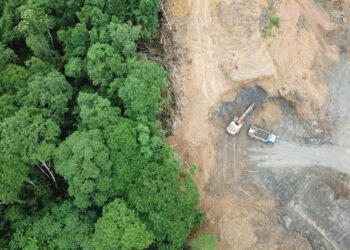Recently, environmental and social issues have become a public and political priority, and as such, of material value for investors. An informed and regular approach to identification and management of ESG impacts shall protect investment portfolios and not only enhance resilience and guard against the risk of accelerated obsolescence and value erosion – and will also provide better financing conditions within a larger pool of new, more responsible capital, attracted to the industry to make a positive ESG impact.
For the real estate sector, the EU Taxonomy drafted by the European Commission within its Sustainable Finance Action Plan (SFAP) is becoming the main guide for practitioners and investors to implement at sector and project level, when looking to ease their access to capital. The EU Taxonomy aims at three objectives when it comes to real estate projects: optimizing the use of resources, reducing emissions and waste, and extending the lifespan of assets by adopting a more circular economy approach that, in turn, will allow the subsequent elongation in projects’ cashflows. To this end it is highly desirable to use innovative methods and technologies that effectively extend the life of buildings and/or their components. Finding solutions to extend the usability of objects, be it with new uses or by upgrading them to extend the current use, allows for greater economy for the investor – who should not always require major renovation or adaptation processes but rather implement an innovative approach. Circularity, considered from the phase of design, significantly improves the economics of a project by allowing the reutilisation of objects or their parts, recycling the resources used in its construction. It even reduces the impact that at the end of the life of an object needs to be considered – as these will incur taxes and costs associated to the demolition of objects, destruction of resources and remediation of the land as the urban and spatial development plans of cities encourage a more human approach to the use of land. Meeting the predicaments of the Triple Bottom Line approach, these solutions do generate economic benefits while reducing environmental and societal impacts.
The adoption of adequate property management practices is crucial in each aspect of its operation as ESG impacts directly depend on measures undertaken by investors, managers, tenants and ultimately even the users, each one at its level of involvement. Proper understanding of the value chain of the properties by all stakeholders will enable the development of effective strategies and drive sustainable change. Defining the ESG strategy with this knowledge will provide the management team with relevant insights to take action – and will also allow them to assess which initiatives will bring the greatest benefit to the entity’s operations, i.e., to its shareholders and stakeholders together. Such benefits may include the following initiatives:
Increased effectiveness of risk management over climate change-related risks
Risk management efficiency is an important matter affecting the value of real estate. At present, preventing climate change that may jeopardize financial stability is a key challenge and adapting to the already present changes is considered as important. The Task Force on Climaterelated Financial Disclosures (TCFD), created by The Financial Stability Board, has prepared a set of guidelines to help enterprises in the identification of climate change-related risks.
To this end, the early identification of climate change-related risks and the effective adoption of risk management policies and procedures do certainly have substantial benefits. Incorporating these aspects in the ESG vision enables a more favourable long-term strategy in line with the long-term approach in the EU Regulations on sustainable finance. To be able to achieve the objectives of the EU Green Deal, many regulations and directives are continuously being introduced by the authorities and the entities are obliged to know and align to these in order to develop longer-term strategies.
A way to build investment resilience
Tenants, users, investors and buyers represent a considerable power, as they expect not only high-standard buildings, compliant with contemporary market requirements, but also respecting local environmental issues, such as appropriate development of land, space for pedestrians, close proximity of greeneries or public transport. Modern and efficient buildings are attractive for clients and more probable to retain their value if managed in compliance with international standards. The approach affects the housing segment, too, contributing to the growing popularity of sustainable construction. Based on the PLGBC report, in 2019 the share of certified housing space increased by 14 percent compared to 2018. When considering all certified facilities in Central and Eastern Europe, Poland remains the certification leader with 51 percent of certified facilities located in the country.
The decision-making practice regarding supply chain and the selection and sourcing of materials remain a crucial aspect of ESG strategy development. The European Commission Construction Product Regulation lays down harmonized conditions for the marketing of construction products and introduces the need to issue a Declaration of Performance for products (DoP), as well as a Voluntary Environmental Product Declaration (EPD). For example, in Poland, the Instytut Techniki Budowlanej (Building Research Institute) is responsible for the national EPD program for construction products. It has registered eleven manufacturers with active environmental declarations. At the beginning of January 2021, around the world there were slightly more than 10,000 verified environmental product declarations, which denoted a 30 percent increase compared to the prior year. As far as building certification is concerned, the entire project and construction process is verified by an assessor, and then evaluated by the certifying body.
Therefore, introducing these ecological solutions such as reduced water or power consumption, high acoustic comfort or ensuring access to daylight, shall decrease operating expenses and improve tenant satisfaction. Further, having considered future risks related to climate change and increased service prices, such measures will affect long-term sustainable performance of these investments.
Access to more affordable financing
To support and assist EU Member States in their transition to a green economy and to ease the adoption of new sustainable practices, the European Union is developing many instruments within the European Green Deal Investment Plan – the Sustainable Europe Investment Plan – such as the European Energy Efficiency Fund and the Just Transition Fund. The potential support from the EU will have to be accompanied by significant private investment. An opportunity to obtain more favourable terms of borrowing is another factor contributing to growing popularity of eco-investments. The number of banks and investors involved in “green finance” that are already offering better terms, larger credit facilities and further assistance to real estate players is growing steadily
Entry to new markets and opportunities
Entities that follow sustainability guidelines may benefit from more strategic freedom, easier access to administrative permits and additional growth opportunities by creating new products and services or expanding their business activities in other regions or countries. This can create growth opportunities as well as ease the access to the new markets – leading to new revenue streams.
Meeting investors’ needs
The growing interest of investors in ESG related data has been observed. Recent environmental and social issues have become a public and political priority, and as such, a material value for investors. According to a 2020 research by GRESB, the share of investors who pay attention to this aspect has grown by 22 percent, which demonstrates that ESG standards will increasingly affect the valuation of real estate, resulting in greater differentiation in performance prospects between assets with well-aligned ESG credentials and assets which fall short in the eyes of investors and are therefore subject to weaker resilience and value erosion risks.
Conclusion
There are valuable outcomes generated by a robust ESG strategy: more resilient balance sheets, stronger cashflows with longer repayment terms, risk management systems adapted to the new environmental conditions are already developed for the industry, etc. Increasingly additional gains are evident for conscious investors as they manage better the new risks, access new capital with better conditions and profit from better reputation among their stakeholders which, in turn, increases their goodwill and the chances to attract and retain clients and talent. Time will tell on how successful these efforts towards the “greater good” were to provide viable, measurable and long-lasting value for the real estate industry as a whole.











